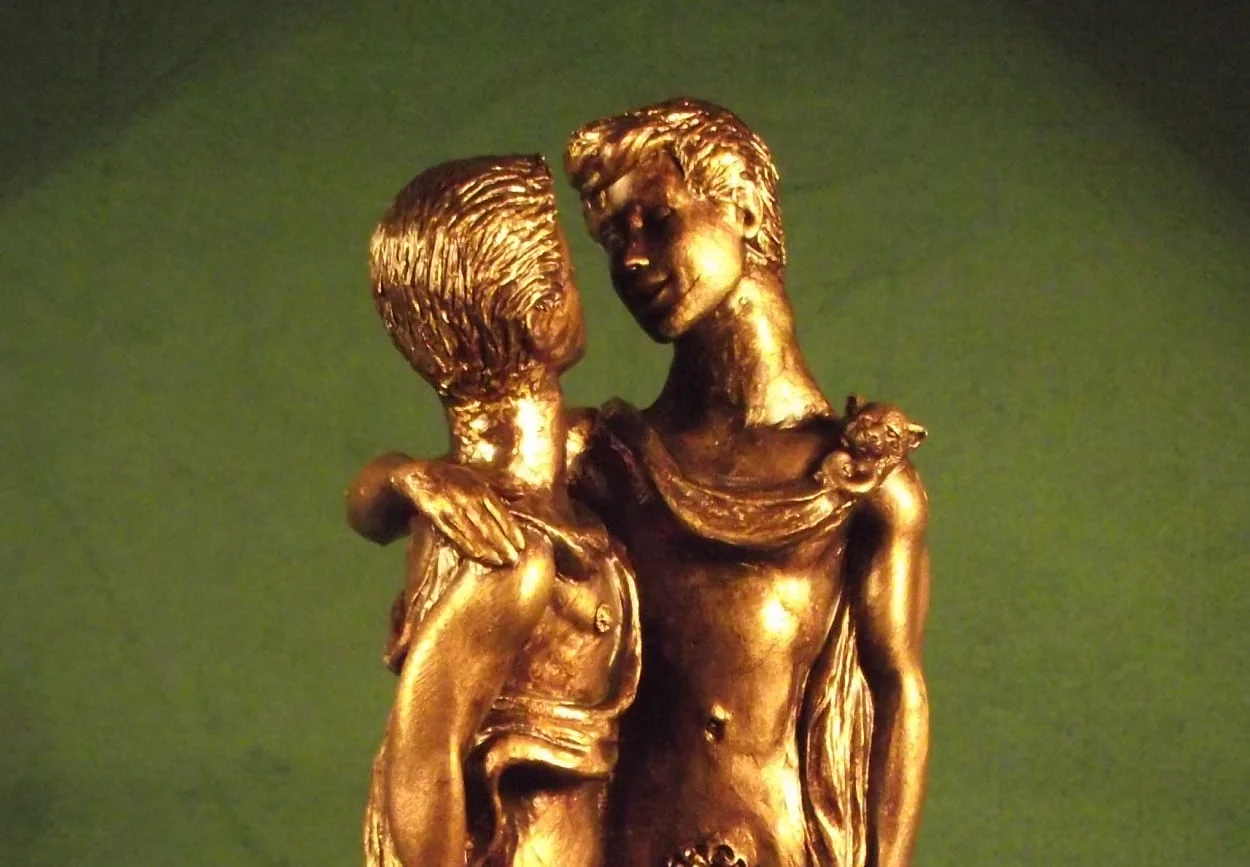The Sacred Band of Thebes was an elite force of shock troops in the Theban army, consisting of 150 paired male lovers that were famed in the classical world during the 4th century BC for their legendary courage and military strength in battle.
The view of homosexuality or same sex relations in Ancient Greece was distinguished not by sexual desire, but instead was perceived by the role that each participant played by either being the penetrator, or passively penetrated.
The role of the penetrator corresponded with attributes of being dominant, masculine, and of high social status, whilst the passive role was associated with femininity, lower social status, and youth, with the latter often being the subject of social stigma in Greek society.
According to the philosopher and historian Plutarch (AD 46 – 119), the Sacred Band consisted of 300 hand-picked men, that were identified as either an older erastês or a younger passive erômenos, who would exchange sacred vows and worship at the shrine of Iolaus (claimed to be one of the lovers of Heracles) at Thebes.
The earliest record of the Sacred Band was in the oration “Against Demosthenes” by the Athenian logographer Dinarchus in 324 BC, but accounts of their full story is given by Plutarch, who likely drew on earlier text from contemporary chroniclers whose works are now lost.
Plutarch describes how the Sacred Band was formed by the boeotarch Gorgidas, shortly after the expulsion of the Spartan garrison occupying the Theban citadel of Cadmea.
Plutarch’s “Parallel Lives” from the second century AD records: “The sacred band, we are told, was first formed by Gorgidas, of three hundred chosen men, to whom the city furnished exercise and maintenance, and who encamped in the Cadmeia; for which reason, too, they were called the city band; for citadels in those days were properly called cities. But some say that this band was composed of lovers and beloved.”
The Sacred Band were first deployed during the Boeotian War in 378 BC, but gained a legendary reputation for their participation in the Battle of Leuctra in 371 BC, in which the Sacred Band fought at the head of the Theban column against the Spartans.
They remained undefeated until the battle of Chaeronea in 338 BC, in which a Macedonian army under the command of Phillip II and his son Alexander, crushed an alliance of Greek city-states led by Athens and Thebes.
In Plutarch’s accounts of the battle: “It is said, moreover, that the band was never beaten, until the battle of Chaeroneia; and when, after the battle, Philip was surveying the dead, and stopped at the place where the three hundred were lying, all where they had faced the long spears of his phalanx, with their armour, and mingled one with another, he was amazed, and on learning that this was the band of lovers and beloved, burst into tears and said: Perish miserably they who think that these men did or suffered aught disgraceful.”
The Greek geographer Pausanias (AD 110-180) in his “Description of Greece”, mentions that the Thebans had erected a lion statue near Chaeronea to commemorate the Thebans killed in the battle.
During the 19th century, pieces of a large stone lion were rediscovered, along with a quadrangular enclosure containing the remains of 254 men, that many historians argue is the final resting place of the fallen soldiers from the Sacred Band of Thebes.







